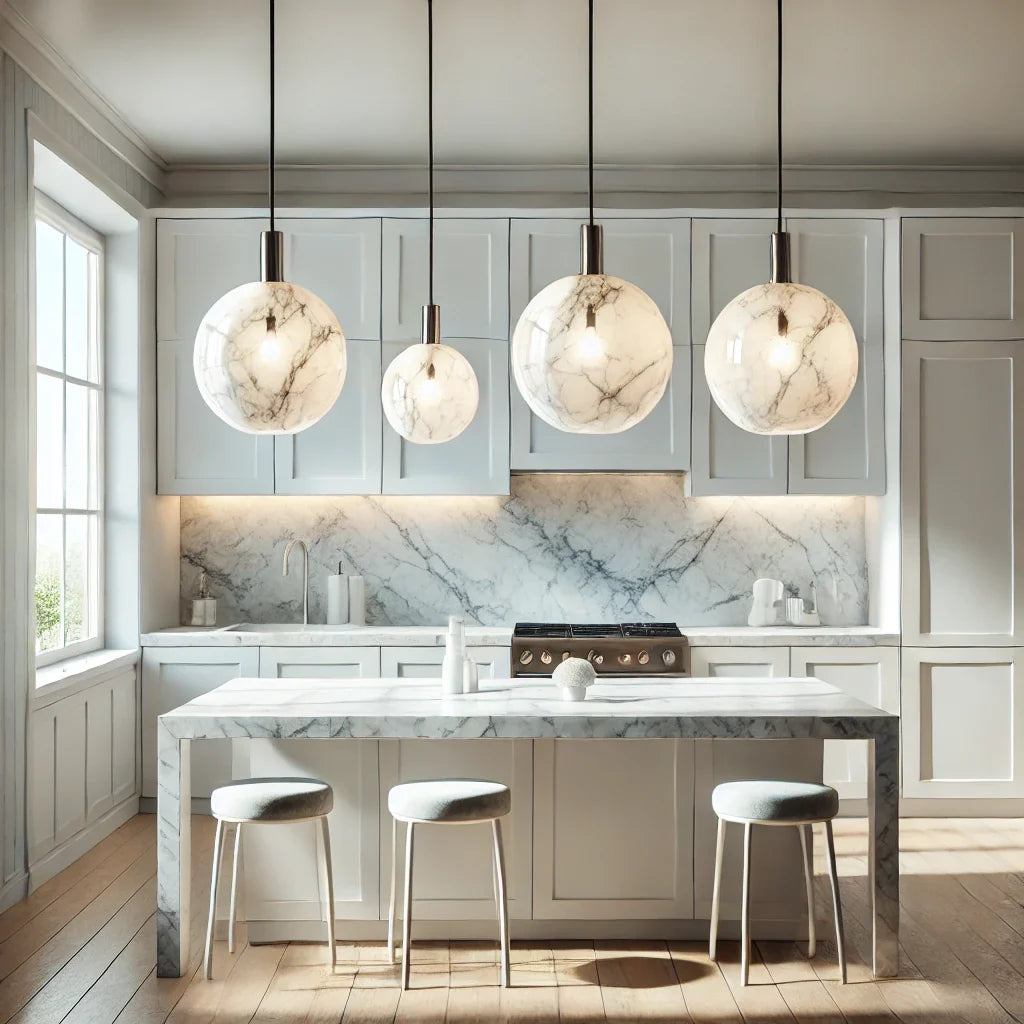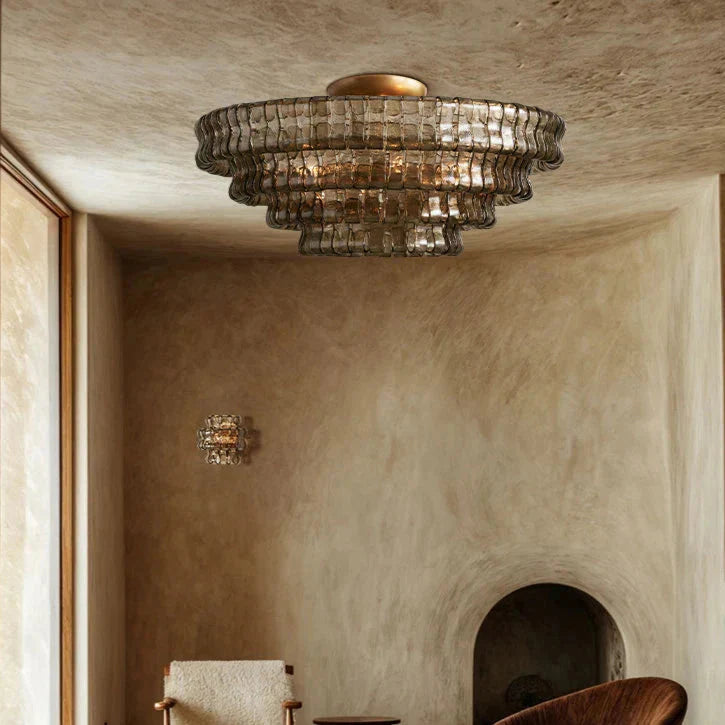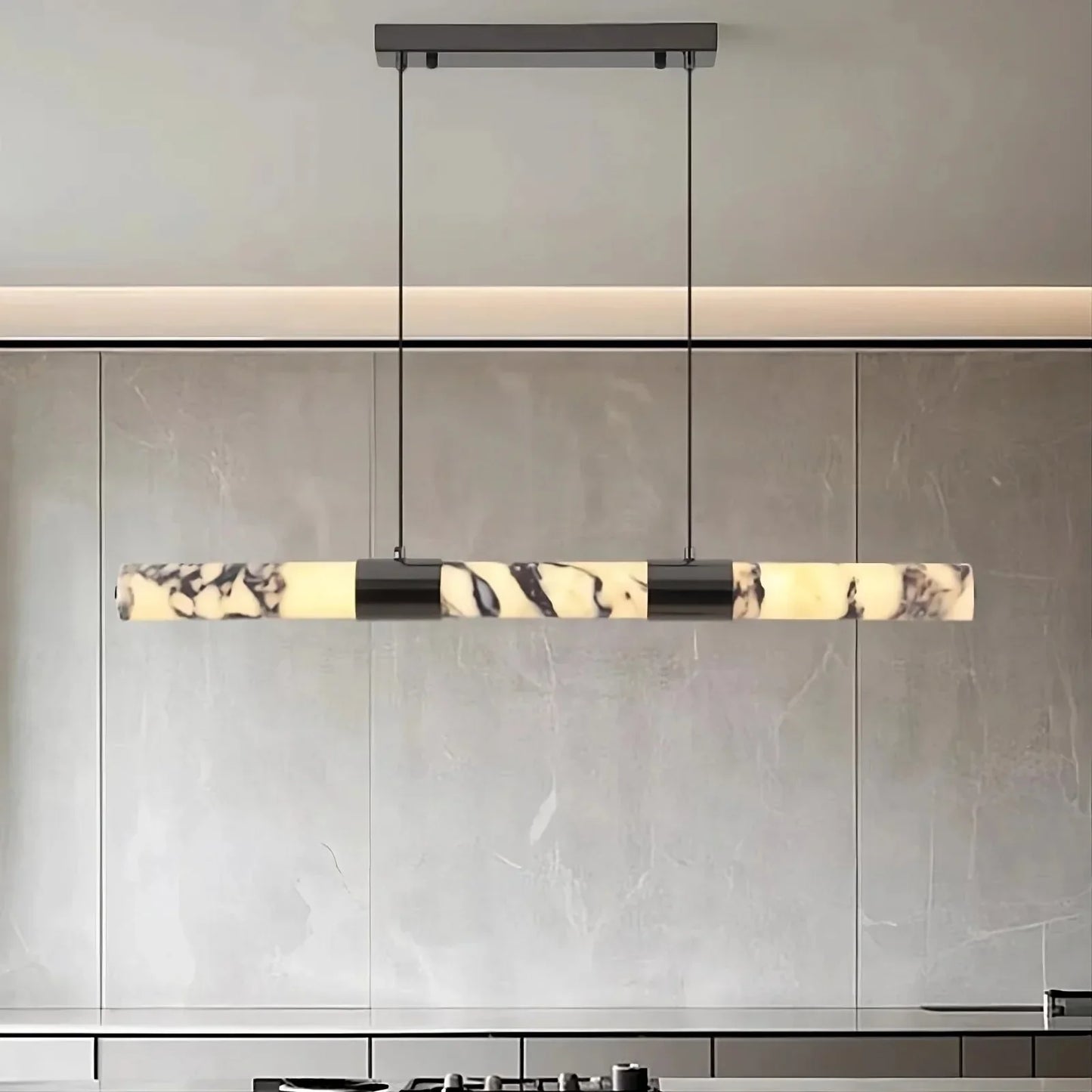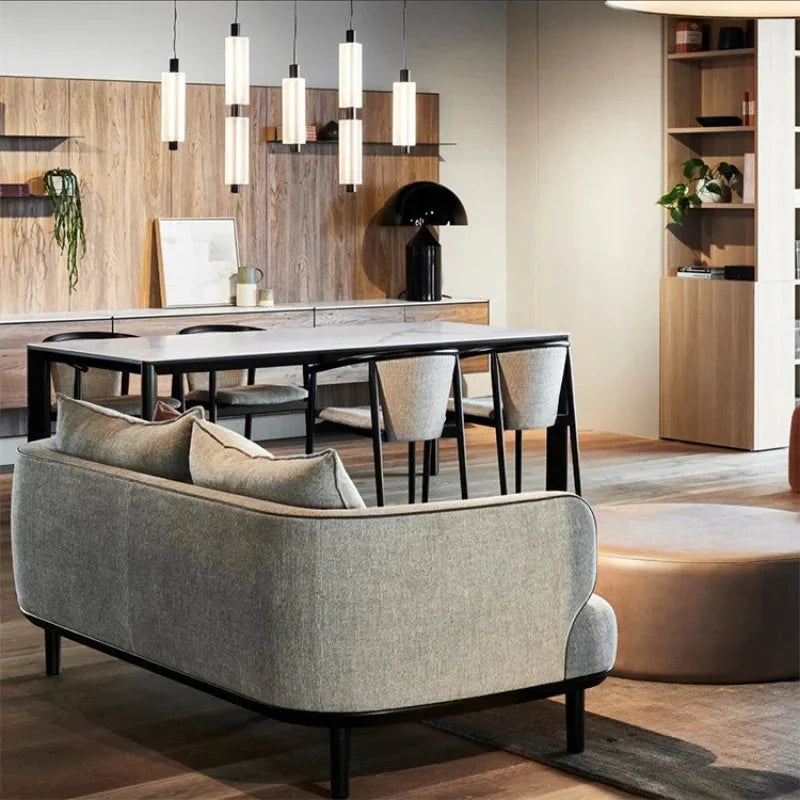
Understanding the Importance of Pendant Lighting
Pendant lighting holds significant importance in kitchen design for several reasons:
- Aesthetic Appeal: Adds a decorative element that enhances the kitchen's overall style.
- Task Lighting: Provides focused light over work areas such as countertops and islands, aiding in meal preparation.
- Versatility: Available in various shapes, sizes, and materials to suit different kitchen themes.
- Space Efficiency: Maximizes floor and counter space by being suspended from the ceiling.
- Ambiance: Offers the ability to alter the room’s mood and atmosphere through adjustable light settings.
Choosing the right pendant lighting involves considering its role in both functionality and design.
Assessing Your Kitchen's Lighting Needs
Understanding the kitchen's layout and purpose is crucial. Identify work areas like countertops, islands, and sinks that require focused lighting. Evaluate existing natural light sources and consider how they impact brightness during different times of the day.
Key Factors to Consider
- Task Lighting: Essential for meal prep and cooking tasks.
- Ambient Lighting: Provides overall illumination for the entire space.
- Accent Lighting: Highlights architectural features and décor.
Measure the kitchen's dimensions to determine appropriate fixture sizes. Assess the height of the ceiling; this influences the pendant light's hanging length. Consider the existing décor style to ensure the pendant lights complement it seamlessly.
Types of Pendant Lights: Which Is Right for Your Kitchen?
Selecting the appropriate pendant light involves understanding different styles:
- Mini Pendants: Ideal for smaller spaces or accent lighting. Perfect for highlighting specific kitchen areas, such as a small island.
- Multi-Light Pendants: Offer multiple light sources in one fixture. Suitable for larger islands or dining areas.
- Drum Pendants: Feature a cylindrical shade. They provide diffused light and work well for broader illumination.
- Globe Pendants: Have a spherical design. They create a modern, stylish look.
- Lantern Pendants: Classic and timeless. Best for adding an element of tradition and elegance.
Size Matters: How to Choose the Right Pendant Light Proportion
Choosing the correct size for a pendant light is crucial for achieving the perfect balance. Utilize these guidelines to determine the right proportion:
- Measure the Space: Calculate the room’s dimensions. For example, use the rule of thumb that the pendant’s diameter in inches should equal the sum of the room’s length and width in feet.
- Consider Ceiling Height: Higher ceilings require larger fixtures. Pendant lights should hang 30-36 inches above countertops or tables.
- Balance with Other Fixtures: Match the pendant size with existing lighting to ensure cohesion.
- Functionality: Opt for larger pendants for ambient lighting; choose smaller ones for task lighting.
Placement and Hanging Heights: Key Considerations
Strategic placement and appropriate hanging heights are vital for both functionality and aesthetics. Key considerations encompass:
- Countertop Height: Hang pendants 30 to 36 inches above the countertop to ensure adequate illumination and avoid glare.
- Space Between Fixtures: Maintain a distance of 24 to 30 inches between each pendant for balanced lighting distribution.
- Ceiling Height: For ceilings above 8 feet, increase the hanging height by 3 inches for every additional foot.
- Functionality: Position pendants to minimize shadows in food preparation areas.
- Room Layout: Consider sightlines, ensuring pendants do not obstruct views or pathways.
Materials and Finishes: Matching Your Kitchen Design
Choosing the right materials and finishes for pendant lighting is crucial in achieving a cohesive kitchen design. Wood, metal, glass, and fabric are popular materials offering varied aesthetics.
Wood
- Ideal for rustic or farmhouse kitchens
- Creates a warm, natural ambiance
Metal
- Best for industrial or modern styles
- Durable and versatile with finishes like brass, chrome, or matte black
Glass
- Suitable for contemporary or traditional spaces
- Offers clear, frosted, or colored options for different lighting effects
Fabric
- Softens the light, perfect for cozy or eclectic designs
- Available in various patterns and colors for customization
Lighting Styles: From Modern to Vintage
Selecting the right lighting style sets the tone. Modern styles often feature clean lines, minimalist design, and energy-efficient LED options.
- Modern: Sleek, chrome or matte finishes, geometric shapes.
- Industrial: Exposed bulbs, metal finishes, often in black or bronze.
- Farmhouse: Rustic, wood accents, often with wrought iron elements.
- Vintage: Nostalgic designs, often with Edison bulbs and ornate details.
Choosing a style significantly impacts the ambiance and overall aesthetic of the kitchen.
Blending elements from different styles can create a unique look, making the space both functional and a reflection of personal taste.
Energy Efficiency: LED vs. Incandescent
When comparing LED to incandescent bulbs, notable differences emerge in energy efficiency. LEDs use up to 75% less energy than incandescent bulbs.
Benefits of LEDs:
- Long Lifespan: LEDs last approximately 25 times longer.
- Heat Emission: LEDs emit very little heat.
- Cost Savings: Despite higher initial costs, the energy savings over time are significant.
Drawbacks of Incandescent Bulbs:
- Short Lifespan: Incandescents last about 1,000 hours.
- High Heat Emission: They convert most energy to heat, not light.
- Frequent Replacements: Require more frequent replacements, increasing costs.
Manufacturers and designers generally recommend LED bulbs for kitchen pendant lighting due to their superior efficiency and longevity.
Dimming and Lighting Control Options
When selecting pendant lighting for the kitchen, considering dimming and control options is crucial. Dimmable lights provide flexibility and adaptability for different tasks and ambiances.
- Dimmer Switch: A traditional choice, compatible with most bulbs and offering straightforward control.
- Smart Controls: Integration with smart home systems, enabling voice commands and app-based controls.
- Motion Sensors: Adds convenience by automatically adjusting based on activity.
- Timer Settings: Allows scheduling, ensuring lights are on only when needed.
Evaluating these options ensures the selected pendant lights meet the varying needs of kitchen activities efficiently.
Budget Considerations: Finding Quality Within Your Price Range
When selecting pendant lighting for the kitchen, budget plays a crucial role. Begin by evaluating the overall lighting budget. Identify key priorities:
- Determine Maximum Spend: Set a cap to prevent overspending.
- Prioritize Features: Decide which features are non-negotiable, such as dimmable functions or specific design styles.
- Compare Brands and Retailers: Research various brands and compare prices at multiple retailers to find deals.
- Material and Finish: Understand that material and finish can significantly impact cost. Opt for durable, cost-effective materials.
- Energy Efficiency: Consider energy-efficient options to save money in the long run.
Installation Tips and Safety Precautions
- Turn off Power: Ensure the power to the installation area is switched off at the circuit breaker to prevent any electrical accidents.
- Read Instructions: Always read the manufacturer’s installation instructions before beginning.
- Use Proper Tools: Utilize the correct tools and hardware recommended for pendant lighting installation.
- Check Weight Capacity: Verify that the mounting area can support the weight of the pendant light.
- Install Junction Box: Ensure a secure junction box is installed to support electrical connections.
- Secure Connections: Double-check all electrical connections and secure them properly with wire nuts.
- Seek Professional Help: If unsure, consult a licensed electrician for assistance.
- Test Functionality: After installation, turn the power back on and test the light to ensure it functions correctly.
- Stabilize Fixtures: Verify pendant lights are hung at an even height and stabilize any wobbling fixtures.
Maintenance and Care for Long-lasting Lighting
To ensure pendant lighting fixtures maintain their brilliance and longevity, regular maintenance is essential.
- Cleaning: Dust and clean with a soft, dry cloth. Avoid harsh chemicals which can damage finishes.
- Bulb Replacement: Use the correct wattage and type as specified by the manufacturer.
- Inspection: Periodically check for any frayed wires or loose connections.
- Position Adjustment: Tighten screws and adjust the height to maintain desired positioning.
- Environment Suitability: Ensure pendant lights are suitable for kitchen humidity and heat conditions.
Proper care keeps pendant lighting not only functional but also a visual centerpiece in the kitchen.
Inspiration: Trending Pendant Lighting Designs
1. Minimalist Fixtures
Embrace clean lines and simplicity. Minimalist pendant lights often feature:
- Sleek metallic finishes
- Neutral color palettes
- Geometric shapes
2. Industrial Style
Industrial designs incorporate raw materials and rugged charm. Key characteristics include:
- Exposed bulbs
- Metallic shades
- Weathered finishes
3. Mid-Century Modern
Infuse a bit of retro flair with mid-century modern pendants that emphasize:
- Organic shapes
- Bold colors
- Mixed materials like wood and metal
4. Farmhouse Chic
Farmhouse pendant lights blend rustic elements with soft elegance, often characterized by:
- Wooden accents
- Distressed finishes
- Vintage-inspired designs
Expert Tips: Common Mistakes to Avoid
- Ignoring Scale and Proportion: Selecting fixtures too large or too small disrupts balance. Prioritize fitting the scale of the space.
- Overlooking Lighting Needs: Focus solely on style can lead to inadequate lighting. Consider functionality.
- Incorrect Height Placement: Pendants too high or low affect effectiveness and aesthetics. Standard is 30-36 inches above counters.
- Neglecting Color Temperature: Mismatched lighting temperatures affect ambiance. Aim for consistent color temperature.
- Forgetting Dimmers: Fixed brightness may be unadaptable for varied activities. Install dimmers for flexibility.
- Underestimating Maintenance: Choose materials and designs that are easy to clean and maintain.
Conclusion: Creating the Perfect Ambiance in Your Kitchen
Choosing the right pendant lighting involves considering various factors to create the desired ambiance. The lighting should enhance functionality while also adding aesthetic value. Key considerations include:
- Style and Design: Choose fixtures that match the kitchen's decor.
- Brightness and Color Temperature: Ensure the lighting is suitable for cooking and dining.
- Height and Spacing: Position pendants to provide adequate light coverage and avoid glare.
- Material and Finish: Select materials that complement kitchen surfaces and finishes.
- Energy Efficiency: Opt for LED lights to save energy and costs.
The right pendant lighting can transform a kitchen, making it both functional and inviting.




